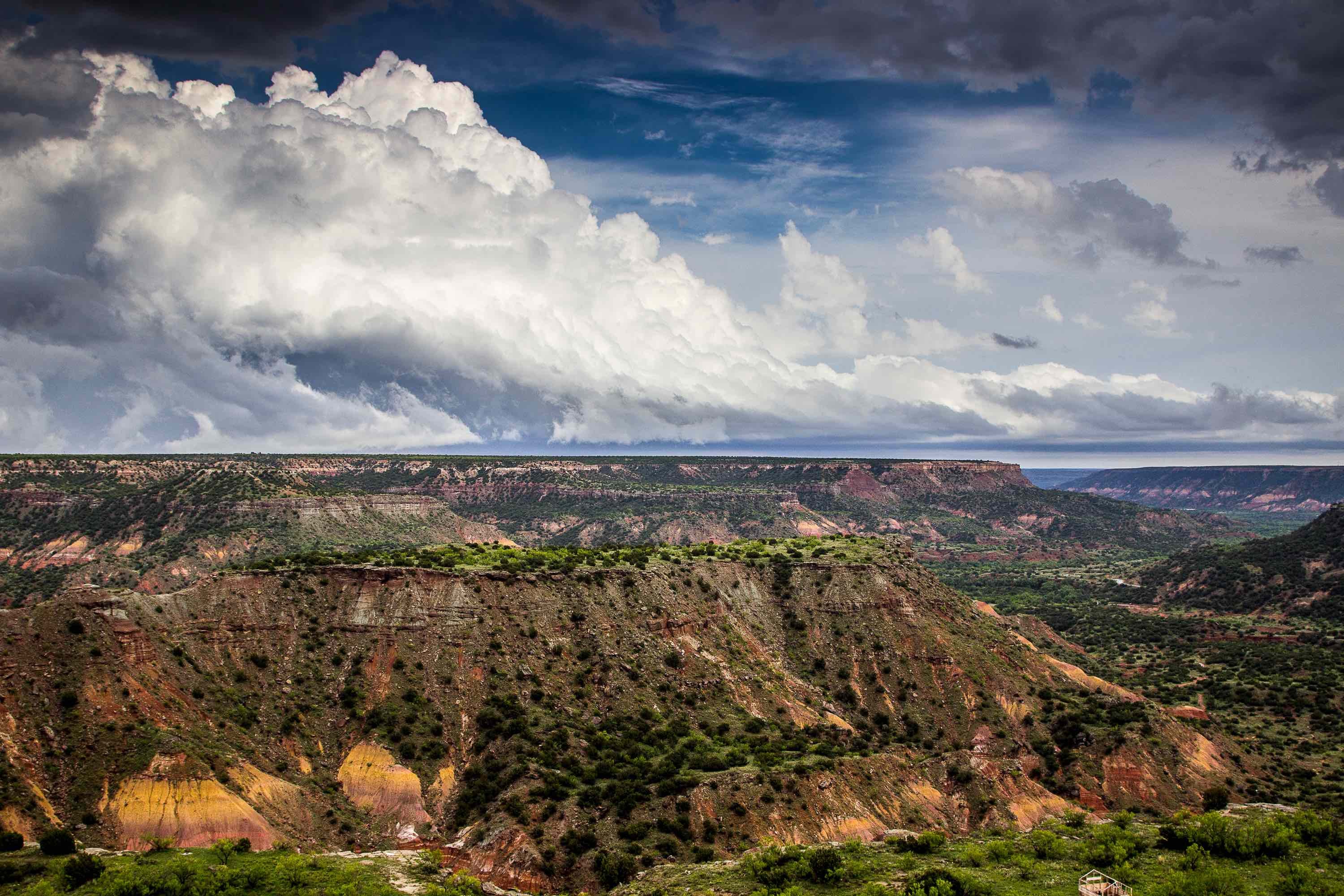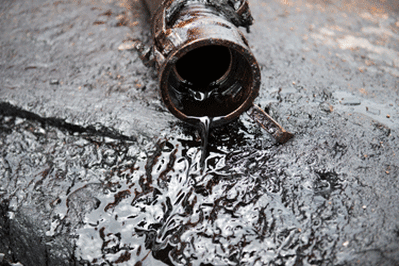Management of exploration and production (E&P) wastes in the oil, gas and geothermal industry is a critical aspect of doing business. When spills or releases of E&P waste to land or water occur, they are regulated under a hierarchy of state and federal laws.
Do I Need To Report My Spill/Release Of An E&P Waste?
It depends. What is the volume or mass that was spilled? Was it spilled to land or water? Any spill that impacts water or adjoining shoreline has to be reported. One has to be careful because a dry creek or a drainage channel may legally be considered a waterway.
For spills on land, the requirement to report a spill is based on the volume (gallons or barrels) or mass (pounds) of the spill. If the spill volume or mass exceeds what is known as the reportable quantity (RQ) then yes, the spill must be reported to the appropriate local, state, and federal agencies.
What Are The Reportable Quantities For Spills Of E&P Wastes?
To determine the applicable RQ for the specific E&P waste type spilled, one must first determine the jurisdictional authority. In Texas, jurisdictional authorities include the Railroad Commission of Texas (RRC), Texas Commission on Environmental Quality (TCEQ), and the General Land Office (GLO).
Some spills may involve multiple jurisdictions.
Texas administrative code, 16 TAC 3.30, states how the State agencies implement the division of jurisdiction between the RRC and TCEQ. With the exception of hazardous wastes, spills associated with E&P activities will typically fall under the jurisdiction of the RRC. Texas administrative code 16 TAC 3.30(e)(8)(C) states, “The agency (TCEQ or RRC) that has jurisdiction over the activity that resulted in the spill incident will be responsible for measures necessary to monitor, document, and remediate the incident.”
To determine the applicable RQ for the specific E&P waste type spilled, one must also determine if it is exempt from RCRA hazardous waste regulations. If nonexempt, then an evaluation is made to determine if the E&P waste will be classified as hazardous or nonhazardous. Some states may have more stringent RQ values than prescribed by Federal laws, i.e. RCRA, CERCLA, SARA, or CWA.
If the E&P waste is classified as a hazardous waste, it will be subject to EPA requirements and RQs. More than 300 substances are listed on Table 302.4, 40 CFR Part 302 along with their RQs. Some RQ values are as low as one (1) pound. The list of RQ values for more common spills at Texas E&P sites are listed further below.
What Are E&P Wastes Types?
In 1988 the Environmental Protection Agency (EPA) determined that certain E&P wastes were exempt from regulation as hazardous waste under RCRA.
These wastes include for example liquid hydrocarbons that flow from wells, drill cutting/fluids and produced water, and filters, pit sludge and sulfur removal compounds as long as they are “uniquely associated with primary field operations”. Other associated wastes that may not be exempt include unused fracturing fluids/acids, waste solvent, and used hydraulic fluids or equipment lubricating oils.
The evaluation and classification of E&P waste as nonexempt or exempt, hazardous or nonhazardous can be complex. An incorrect classification could lead to additional scrutiny from State or Federal agencies.
What Are Texas’ Reportable Quantities of E&P Wastes?
Reportable quantities and reporting requirements vary by jurisdiction. RQ values for a few common E&P wastes are listed below by jurisdiction.
GLO Jurisdiction:
Any Oil or Chemical to coastal waters – RQ = “Harmful quantity of oil”, 31 TAC 19.2(a)(9)
RRC Jurisdiction:
Crude Oil to land – RQ = 210 gallons (5 barrels), 16 TAC 3.20(b), 16 TAC 3.91(e)(1)
Crude Oil to inland water – RQ = Any amount that creates a sheen, 16 TAC 3.91(e)(3)
Condensate to land – RQ = 210 gallons (5 barrels), 16 TAC 3.20(b), 16 TAC 3.91(e)(1)
Condensate to inland water – RQ = Any amount that creates a sheen, 16 TAC 3.91(e)(3)
Chemical – RQ is defined by 40 CFR 117 or 302, 16 TAC 3.98(x)(1)(A)
Produced Water to inland water – RQ = Any amount, 16 TAC 3.8(b)
Produced Water to land – RQ = There is not a RQ value codified for produced water. The RQ value appears to vary by RRC district. We have encountered RQ values from 25 to 100 bbls. Contact the local RRC office to inquire as to their district requirements.
TCEQ Jurisdiction:
Crude Oil to land – RQ = 210 gallons (5 barrels), 30 TAC 327.4(b)(1)(A)
Crude Oil to inland water – RQ = Any amount that creates a sheen, 30 TAC 327.4(b)(1)(B)
Petroleum/Used Oil to land – RQ = 25 gallons, 30 TAC 327.4(b)(2)(A)
Petroleum/Used Oil to inland water – RQ = Any amount that creates a sheen, 30 TAC 327.4(b)(2)(C)
Chemical to land – RQ is defined in Table 302.4 in 40 CFR 302.4
Chemical to water – RQ is defined in Table 302.4 in 40 CFR 302.4 or 100 pounds, whichever is less, 30 TAC 327.4(a)(1)
Industrial Solid Waste or Other Substance – RQ = 100 pounds, 30 TAC 327.4(c)
How Can You Dispose Of E&P Waste?
Options for disposal may include direct burial, transfer to a licensed landfill, treatment, or recycling. Not all of these options are available for all waste types. State or Federal approval or permits may be required.
The topic of spills and waste can get complex. The information presented above is a high level overview and not meant to encompass all scenarios. Contact Talon/LPE to discuss how we can help you maintain compliance with the myriad of State and Federal rules associated with spills and waste handling. We are an environmental consulting, engineering, drilling, and construction firm, providing services to the Oil and Gas (O&G) industry in Texas, Oklahoma, and New Mexico.
Do I Need To Report My Spill/Release Of An E&P Waste?
It depends. What is the volume or mass that was spilled? Was it spilled to land or water? Any spill that impacts water or adjoining shoreline has to be reported. One has to be careful because a dry creek or a drainage channel may legally be considered a waterway.
For spills on land, the requirement to report a spill is based on the volume (gallons or barrels) or mass (pounds) of the spill. If the spill volume or mass exceeds what is known as the reportable quantity (RQ) then yes, the spill must be reported to the appropriate local, state, and federal agencies.
What Are The Reportable Quantities For Spills Of E&P Wastes?
To determine the applicable RQ for the specific E&P waste type spilled, one must first determine the jurisdictional authority. In Texas, jurisdictional authorities include the Railroad Commission of Texas (RRC), Texas Commission on Environmental Quality (TCEQ), and the General Land Office (GLO).
Some spills may involve multiple jurisdictions.
Texas administrative code, 16 TAC 3.30, states how the State agencies implement the division of jurisdiction between the RRC and TCEQ. With the exception of hazardous wastes, spills associated with E&P activities will typically fall under the jurisdiction of the RRC. Texas administrative code 16 TAC 3.30(e)(8)(C) states, “The agency (TCEQ or RRC) that has jurisdiction over the activity that resulted in the spill incident will be responsible for measures necessary to monitor, document, and remediate the incident.”
To determine the applicable RQ for the specific E&P waste type spilled, one must also determine if it is exempt from RCRA hazardous waste regulations. If nonexempt, then an evaluation is made to determine if the E&P waste will be classified as hazardous or nonhazardous. Some states may have more stringent RQ values than prescribed by Federal laws, i.e. RCRA, CERCLA, SARA, or CWA.
If the E&P waste is classified as a hazardous waste, it will be subject to EPA requirements and RQs. More than 300 substances are listed on Table 302.4, 40 CFR Part 302 along with their RQs. Some RQ values are as low as one (1) pound. The list of RQ values for more common spills at Texas E&P sites are listed further below.
What Are E&P Wastes Types?
In 1988 the Environmental Protection Agency (EPA) determined that certain E&P wastes were exempt from regulation as hazardous waste under RCRA.
These wastes include for example liquid hydrocarbons that flow from wells, drill cutting/fluids and produced water, and filters, pit sludge and sulfur removal compounds as long as they are “uniquely associated with primary field operations”. Other associated wastes that may not be exempt include unused fracturing fluids/acids, waste solvent, and used hydraulic fluids or equipment lubricating oils.
The evaluation and classification of E&P waste as nonexempt or exempt, hazardous or nonhazardous can be complex. An incorrect classification could lead to additional scrutiny from State or Federal agencies.
What Are Texas’ Reportable Quantities of E&P Wastes?
Reportable quantities and reporting requirements vary by jurisdiction. RQ values for a few common E&P wastes are listed below by jurisdiction.
GLO Jurisdiction:
Any Oil or Chemical to coastal waters – RQ = “Harmful quantity of oil”, 31 TAC 19.2(a)(9)
RRC Jurisdiction:
Crude Oil to land – RQ = 210 gallons (5 barrels), 16 TAC 3.20(b), 16 TAC 3.91(e)(1)
Crude Oil to inland water – RQ = Any amount that creates a sheen, 16 TAC 3.91(e)(3)
Condensate to land – RQ = 210 gallons (5 barrels), 16 TAC 3.20(b), 16 TAC 3.91(e)(1)
Condensate to inland water – RQ = Any amount that creates a sheen, 16 TAC 3.91(e)(3)
Chemical – RQ is defined by 40 CFR 117 or 302, 16 TAC 3.98(x)(1)(A)
Produced Water to inland water – RQ = Any amount, 16 TAC 3.8(b)
Produced Water to land – RQ = There is not a RQ value codified for produced water. The RQ value appears to vary by RRC district. We have encountered RQ values from 25 to 100 bbls. Contact the local RRC office to inquire as to their district requirements.
TCEQ Jurisdiction:
Crude Oil to land – RQ = 210 gallons (5 barrels), 30 TAC 327.4(b)(1)(A)
Crude Oil to inland water – RQ = Any amount that creates a sheen, 30 TAC 327.4(b)(1)(B)
Petroleum/Used Oil to land – RQ = 25 gallons, 30 TAC 327.4(b)(2)(A)
Petroleum/Used Oil to inland water – RQ = Any amount that creates a sheen, 30 TAC 327.4(b)(2)(C)
Chemical to land – RQ is defined in Table 302.4 in 40 CFR 302.4
Chemical to water – RQ is defined in Table 302.4 in 40 CFR 302.4 or 100 pounds, whichever is less, 30 TAC 327.4(a)(1)
Industrial Solid Waste or Other Substance – RQ = 100 pounds, 30 TAC 327.4(c)
How Can You Dispose Of E&P Waste?
Options for disposal may include direct burial, transfer to a licensed landfill, treatment, or recycling. Not all of these options are available for all waste types. State or Federal approval or permits may be required.
The topic of spills and waste can get complex. The information presented above is a high level overview and not meant to encompass all scenarios. Contact Talon/LPE to discuss how we can help you maintain compliance with the myriad of State and Federal rules associated with spills and waste handling. We are an environmental consulting, engineering, drilling, and construction firm, providing services to the Oil and Gas (O&G) industry in Texas, Oklahoma, and New Mexico.


